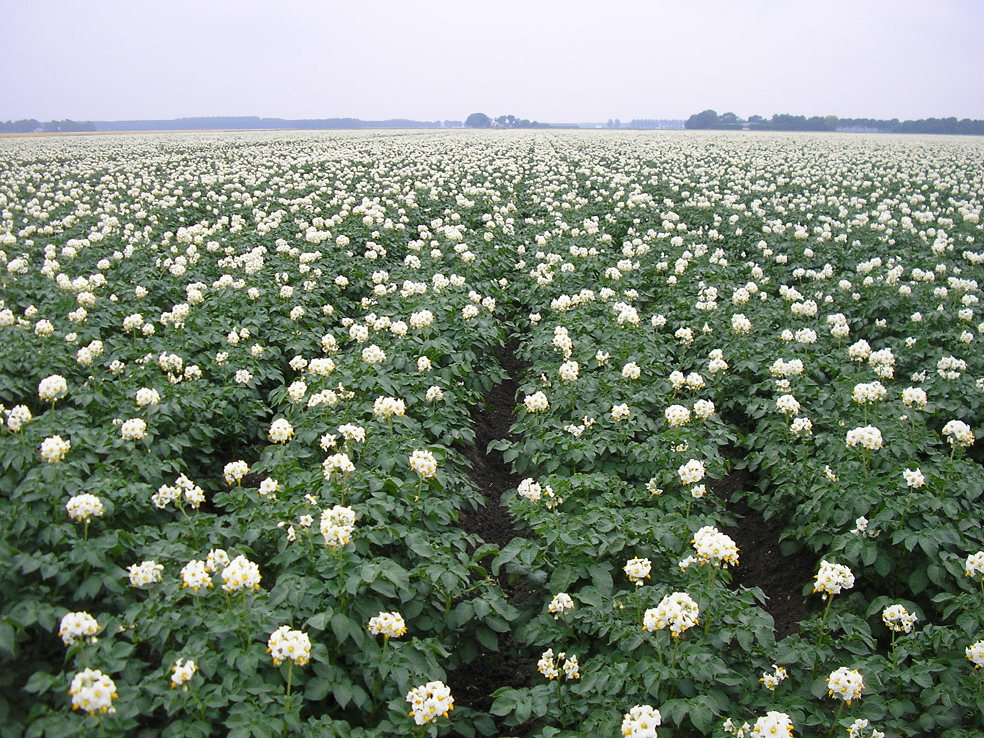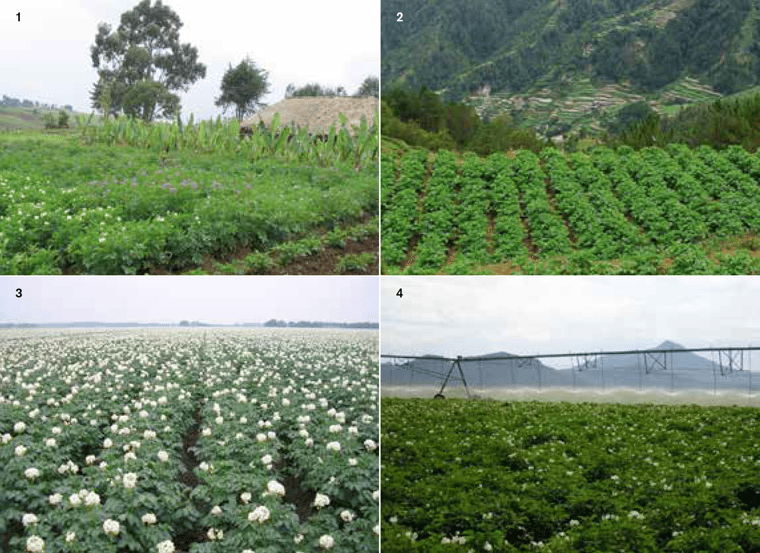
In technologically advanced conditions, seed certification and inputs of chemicals contribute substantially to the yielding ability of the potato crop.
In rain-fed conditions, where irrigation is not common, yields are considerably higher in developed than in developing economies. Central and Northern Europe (e.g. Ukraine, Russia, Czech Republic) and the North-East of America/Canada (Quebec, New Brunswick) and of Asia (Korea, Japan) are rain-fed in general and farmers apply high levels of fertilizers and pesticides and quality seed. In most Sub-Saharan countries, with rain-fed potato production, managerial interventions (irrigation, fertilization and disease control) are few. Here crops are subjected to the environmental growing conditions as they present themselves.
Optimizing managerial interventions
Across the world, farmers achieve the highest yields when they irrigate crops and also optimize other managerial interventions. The South Island of New Zealand and the North West of the USA, e.g. the states of Idaho and Washington, offer such environments. The environment where a potato crop is grown, presents the main climatic growth-defining factors that growers cannot alter even if they wanted to. These factors are temperature, precipitation, evapotranspiration, solar radiation and day length or photoperiod. The temperature determines the length of the growing season between planting and harvest: heat free or frost free. Solar radiation is responsible for the daily growth rate and day length determines the length of the growth cycle of the crop, in other words its earliness or lateness. Shorter days lead to earlier tuber initiation and earlier crop maturity. If not irrigated, the crop is rainfed only and yields are reduced more or less proportional to the ratio of water available: water need during the growth cycle between planting and harvest.

In subsistence farming (1) growers tend to save their own seed, apply manure and grow off-season to avoid diseases. In rain-fed, high input potato production (2, 3), only moisture supply is sub-optimal and yield differences among crops are determined by rainfall, temperature and solar radiation. In an irrigated high input system (4), yield differences stem from solar radiation and temperature only, two factors a grower cannot alter.
Want to keep reading about the potato crop and the environmental conditions influencing the growth and yield of potatoes?
Our Potato handbook is a global potato university in 1 book!
Buy your copy today and get a one-year free subscription to PotatoWorld magazine.

